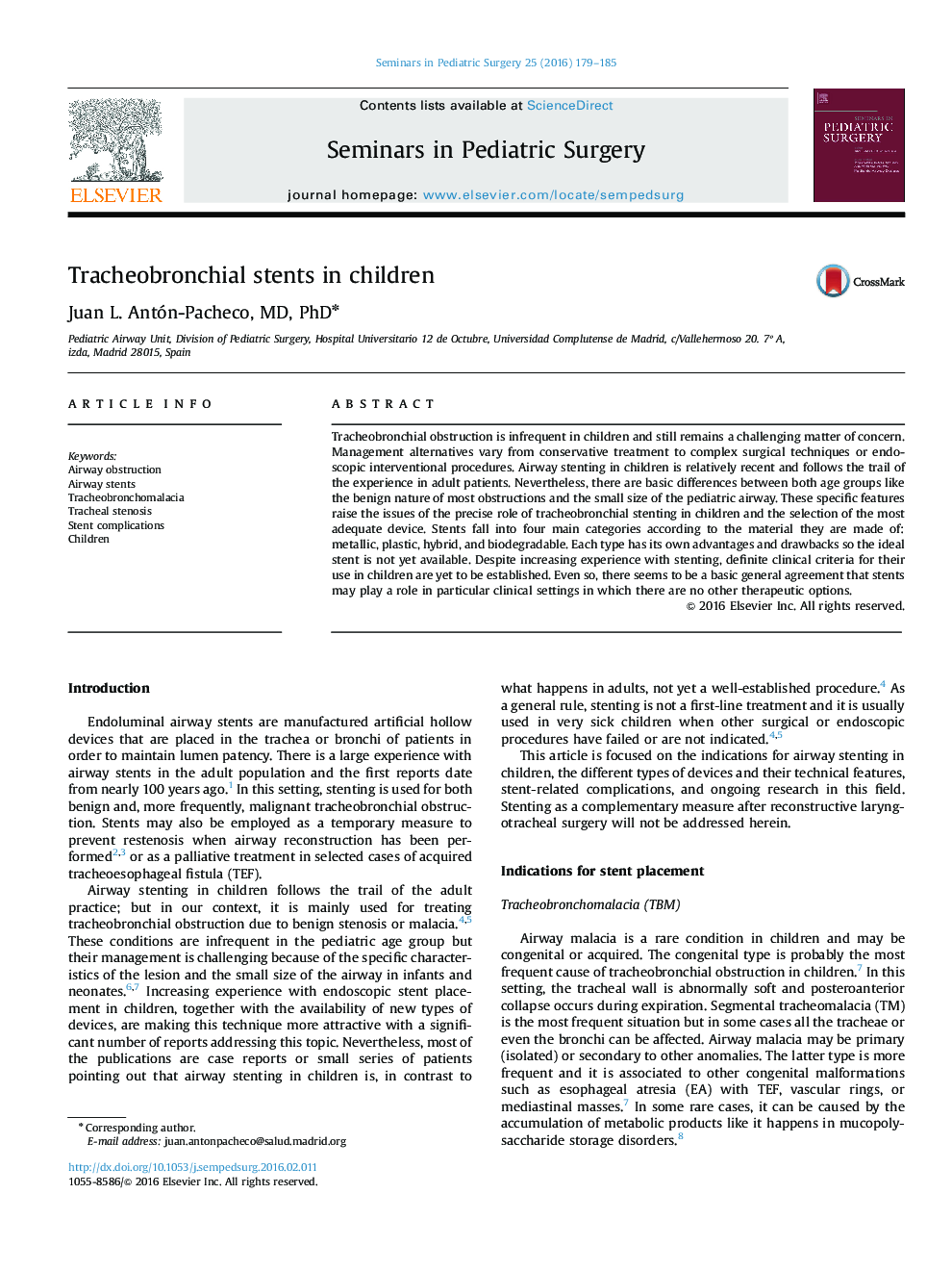| Article ID | Journal | Published Year | Pages | File Type |
|---|---|---|---|---|
| 4176391 | Seminars in Pediatric Surgery | 2016 | 7 Pages |
Tracheobronchial obstruction is infrequent in children and still remains a challenging matter of concern. Management alternatives vary from conservative treatment to complex surgical techniques or endoscopic interventional procedures. Airway stenting in children is relatively recent and follows the trail of the experience in adult patients. Nevertheless, there are basic differences between both age groups like the benign nature of most obstructions and the small size of the pediatric airway. These specific features raise the issues of the precise role of tracheobronchial stenting in children and the selection of the most adequate device. Stents fall into four main categories according to the material they are made of: metallic, plastic, hybrid, and biodegradable. Each type has its own advantages and drawbacks so the ideal stent is not yet available. Despite increasing experience with stenting, definite clinical criteria for their use in children are yet to be established. Even so, there seems to be a basic general agreement that stents may play a role in particular clinical settings in which there are no other therapeutic options.
